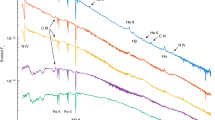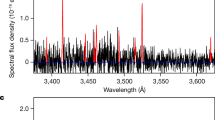Abstract
SINCE my last communication (see NATURE, vol. xxvii. p. 110) the weather and the presence of moonshine has been unfavourable for views of the comet; but I have seen it, more or less distinctly, on seven nights, from November 22 to December 21. I will not take up your space with details, but mention, as the general result of these observations, that the comet has become smaller in dimensions, and much fainter in its light. With moonlight, no trace of a tail is visible; and the nucleus can only be discerned by telescope as a nebulous star of third magnitude. In absence of moonlight, as on December 6, 8, and 12, between 2 and 3.30 a.m., the tail was visible to a length of about 10°, with a breadth expanding from the head, with no distinguishable outline. My last view of it was on the 20th, at 3 a.m., when, with a brilliant starlight after moonset, the comet was in the south-south-east, about 20° above the horizon, with a tail about 8° long, and a nucleus, a nebulous star of third or second magnitude. Its position was about as far to the east-north-east of Procyon as that star is east-south-east of Sirius. It seems likely to be visible in clear moonless nights for two or three weeks longer.
This is a preview of subscription content, access via your institution
Access options
Subscribe to this journal
Receive 51 print issues and online access
$199.00 per year
only $3.90 per issue
Buy this article
- Purchase on SpringerLink
- Instant access to full article PDF
Prices may be subject to local taxes which are calculated during checkout
Similar content being viewed by others
Author information
Authors and Affiliations
Rights and permissions
About this article
Cite this article
WILLIAMS, C. The Comet during the Last Month. Nature 27, 198 (1882). https://doi.org/10.1038/027198a0
Issue date:
DOI: https://doi.org/10.1038/027198a0



